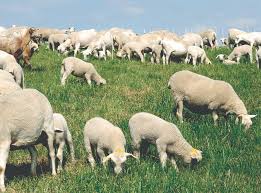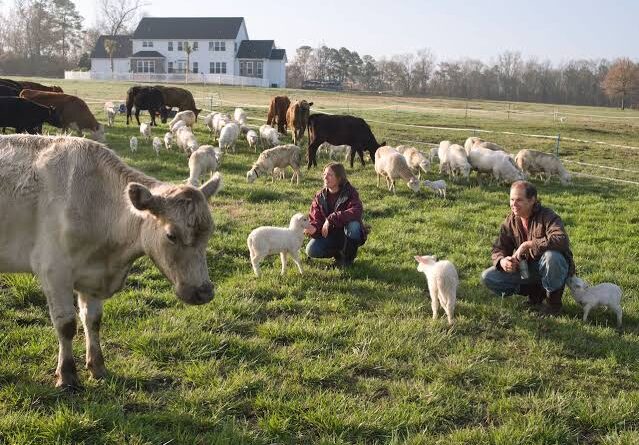What are the Benefits of Rotational Grazing for Livestock?
Rotational grazing for livestock is a smart way to let animals move around different fields. It’s like giving them a buffet of fresh grass. Imagine a big farm split into sections. Instead of letting the animals roam everywhere, we divide the land into smaller parts. This helps the grass grow better and keeps the animals healthy.
The trick is to let the animals eat in one section for a short time. When they’ve had their fill, we move them to the next section. This gives the grass time to grow back in the first section. It’s like a game of musical chairs for cows and sheep, but with grass.
This method has some cool benefits. First off, it keeps the grass happy. Just like us, if we eat all the food in one go, there won’t be any left for later. Grazing animals do the same – if they eat all the grass in one place, it takes a while for it to grow back. Rotational grazing makes sure there’s always fresh, tasty grass for the animals to munch on.
Now, let’s talk about the land. When animals stay in one spot for too long, they might make a mess. Imagine a bunch of friends camping in the same spot for a week – it wouldn’t look good. Rotational grazing helps prevent this. By moving the animals around, we avoid having one area turn into a muddy mess.
But wait, there’s more! Rotational grazing isn’t just good for the grass and the land. It’s also good for the animals. They get a varied diet by moving through different fields. It’s like having a buffet with different dishes. Each field offers something a bit different, making sure the animals get all the nutrients they need.
Additionally, rotational grazing for livestock is like a well-orchestrated dance between animals and the land. It keeps everyone happy – the grass, the animals, and the farmers. So, the next time you see cows or sheep grazing in a pattern, remember, it’s not just a random dance; it’s the art of rotational grazing at work.
Read Also: Principles of Feeding Pigs and Feed Resources
What are The Benefits of Rotational Grazing For Livestock?

Rotational grazing is an excellent method for raising livestock that provides numerous advantages for both the animals and the land they graze on. This approach involves dividing a pasture into smaller sections, allowing animals to move between them in a controlled manner. Here are some key benefits of rotational grazing:
1. Improved Pasture Quality: Rotational grazing promotes healthier pastures by preventing overgrazing. Livestock are moved to fresh areas regularly, allowing previously grazed sections to recover and regrow. This ensures a more consistent and nutritious food source for the animals.
2. Increased Forage Utilization: Livestock under rotational grazing utilize forage more efficiently. With access to smaller, well-managed paddocks, animals tend to graze more evenly, reducing waste and maximizing the use of available vegetation.
3. Enhanced Animal Health: Regular rotation minimizes exposure to parasites and diseases. As animals move to fresh pastures, they leave behind potentially harmful parasites, breaking the life cycle and promoting better overall health among the livestock.
4. Optimized Weight Gain: Rotational grazing can contribute to improved weight gain in livestock. Access to fresh and nutrient-rich forage supports better growth rates, ensuring that animals reach market weight more efficiently.
5. Soil Health and Nutrient Cycling: The rest periods provided to grazed areas enhance soil health. Rotational grazing encourages natural nutrient cycling, as manure is distributed more evenly across the pasture, enriching the soil with essential nutrients.
6. Water Quality Protection: Controlled grazing reduces the risk of soil erosion and nutrient runoff into water sources. This safeguards water quality by preventing the introduction of pollutants and sedimentation, benefiting both livestock and the environment.
7. Biodiversity Conservation: Rotational grazing practices can contribute to the preservation of biodiversity. By allowing pastures to recover, diverse plant species can thrive, creating a more ecologically balanced environment that supports various wildlife.
8. Economic Efficiency: Although setting up rotational grazing systems requires initial investment, the long-term benefits often outweigh the costs. Improved forage utilization and animal health can result in lower feed and veterinary expenses, ultimately contributing to economic efficiency for livestock farmers.
9. Resilience to Weather Variability: Rotational grazing can enhance resilience to climate variations. Managed pastures may recover more effectively from adverse weather conditions, providing a more reliable and consistent food source for livestock even during challenging seasons.
10. Adaptability to Farm Size: Rotational grazing is adaptable to different farm sizes. Whether on a small family farm or a larger commercial operation, the principles of rotational grazing can be scaled to fit the specific needs and resources of the livestock producer.
In addition, the benefits of rotational grazing for livestock are multifaceted, encompassing improved pasture quality, animal health, environmental sustainability, and economic viability.
Implementing this method offers a holistic approach to livestock management that pays dividends for both farmers and the ecosystems they operate within.
Read Also: Nutrient Requirement of Pigs and Swine Feeding Methods
Techniques Used in Rotational Grazing For Livestock

Rotational grazing involves strategic planning and execution to maximize its benefits for both livestock and the land. Various techniques are employed to ensure efficient and sustainable rotational grazing practices:
1. Paddock Division: Dividing the grazing area into smaller paddocks is fundamental to rotational grazing. This can be achieved using temporary or permanent fencing, enabling controlled movement of livestock from one paddock to another.
2. Grazing Rotation Schedule: Establishing a well-defined grazing rotation schedule is crucial. Livestock are moved systematically between paddocks, allowing for adequate rest periods for each area to recover and regrow. The schedule is often based on factors like forage growth rates and seasonal variations.
3. Stocking Density Management: Proper stocking density is essential for rotational grazing success. The number of animals in each paddock should be carefully managed to prevent overgrazing and ensure uniform forage utilization.
4. Rest Periods: Allowing rest periods for grazed paddocks is a key principle. These periods vary based on factors such as forage type, climate, and growth rates. Adequate rest ensures the regrowth of vegetation and maintains pasture health.
5. Water Access Planning: Efficient water access is critical in rotational grazing systems. Strategically placing water sources in each paddock ensures that livestock have a continuous supply, encouraging even grazing across the entire pasture.
6. Fencing Systems: Various fencing systems are employed in rotational grazing, including electric fencing and movable fencing. These systems provide flexibility in adjusting paddock sizes and configurations based on the specific needs of the livestock and the land.
7. Monitoring and Record-Keeping: Regular monitoring of forage conditions, animal health, and pasture recovery is vital. Farmers keep detailed records to track grazing patterns, assess the success of rotations, and make informed adjustments to the grazing plan.
8. Integration with Other Farming Practices: Rotational grazing is often integrated with other farming practices, such as agroforestry or cover cropping. This integration enhances overall land productivity, promotes biodiversity, and provides additional benefits for both livestock and the environment.
9. Adaptive Management: Rotational grazing requires flexibility. Farmers must be adaptive in response to changing weather conditions, forage growth patterns, and the specific needs of the livestock. This adaptive approach ensures the sustainability of the grazing system over the long term.
10. Education and Training: Proper education and training for farmers and farm workers are crucial. Understanding the principles and techniques of rotational grazing enhances the effectiveness of its implementation, leading to better outcomes for livestock and the land.
By employing these techniques, farmers can implement rotational grazing successfully, promoting a balance between livestock production and sustainable land management. This approach not only benefits the immediate farming operation but also contributes to the long-term health of the environment.
Read Also: Ways to Make Money from Biodegradable Waste Materials









